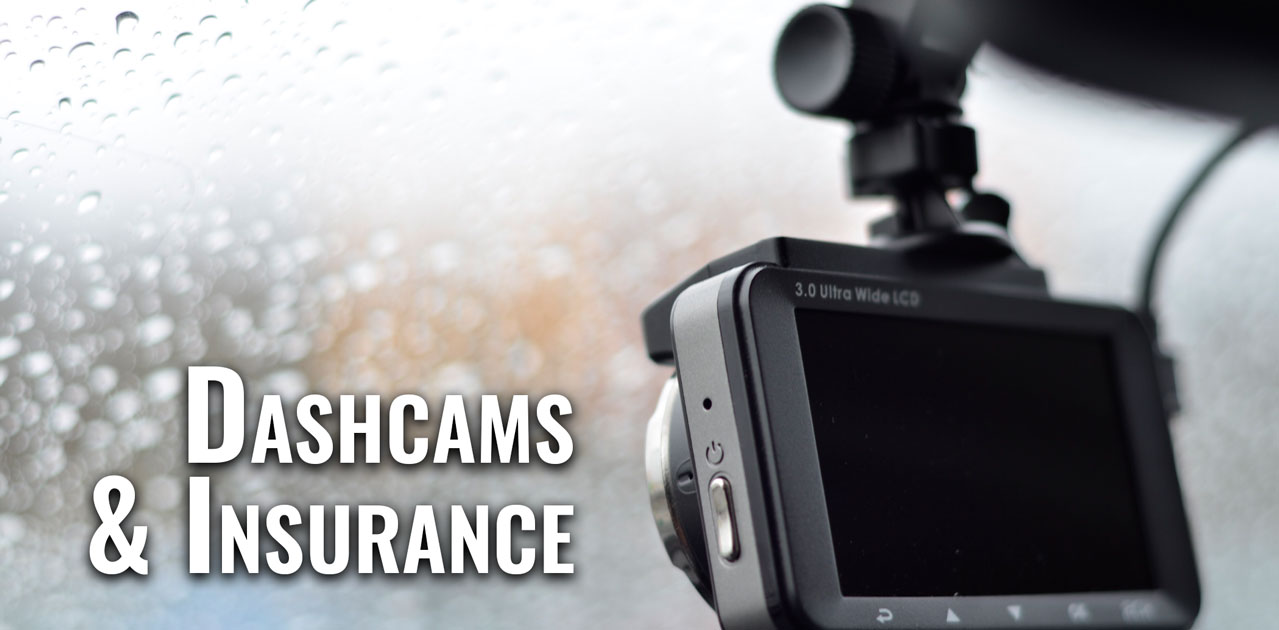Although an organization may benefit from utilizing vehicles, doing so can also carry numerous exposures. Specifically, drivers who engage in unsafe behaviors behind the wheel could contribute to costly road incidents. Even if an organization’s drivers weren’t responsible for causing such incidents, other motorists or pedestrians might still try to blame them, thus resulting in legal expenses and insurance issues for the organization.
Fortunately, dashboard cameras—commonly referred to as dashcams—are useful tools to help address these exposures. Simply put, a dashcam is a small, digital video camera mounted to a vehicle’s windshield or dashboard. By monitoring drivers’ behavior and capturing road incidents as they happen, these devices can promote safe driving techniques and help identify responsible parties amid incident investigations.
Dashcams have been implemented in many large-scale commercial fleets but can also present value to organizations with just a handful of vehicles (e.g., delivery vans and pickup trucks). Review this article for more information on dashcams, their main advantages and additional considerations related to this type of vehicle technology.
What Are Dashcams?
A dashcam is a camera installed within a vehicle to monitor the driver’s behavior and events on the road. Apart from capturing crashes and collisions, dashcams are commonly utilized to identify these unsafe practices:
- Speeding and hard braking
- Rounding corners abruptly and making rolling stops
- Tailgating and lane drifting
A dashcam usually records the road in front of the vehicle. However, such a device can also be equipped with a rear-facing camera to record the road behind the vehicle and capture potential rear-end collisions. In some cases, a dashcam may include a driver-facing camera to showcase the driver’s behavior behind the wheel and detect instances of distracted or fatigued driving.
Most dashcams are powered by cables connecting to their associated vehicles or hardwired into their vehicles’ electrical systems. A dashcam typically starts recording as soon as the vehicle turns on. Certain dashcams can also record instances of motion or impact while their associated vehicles are parked.
The price of dashcams vary. Some dashcams must have their footage uploaded to physical memory cards, while others can send this footage directly to digital databases (e.g., the cloud) via mobile device apps. Certain dashcams can capture video in as high as 4K resolution, whereas others collect footage in standard resolution. Some dashcams even come with special features—such as night vision, GPS tracking and time stamping. Sophisticated dashcams with added features or capabilities are generally more expensive.
Advantages of Dashcams
Dashcams can offer a wide range of organizational benefits, including the following:
- Promoting safe driving habits—Having dashcams within vehicles can encourage drivers to prioritize safe practices behind the wheel, as they will know they are being monitored. Drivers can also review dashcam footage after their journeys to better identify poor behaviors on the road and take steps to avoid these practices during future trips.
- Reducing crashes and collisions—By promoting safe driving habits, dashcams can subsequently help minimize the risk of drivers getting involved in crashes or collisions. In fact, according to a recent study from the Virginia Tech Transportation Institute, event-based video systems contributed to a 20% reduction in fatal crashes on the road.
- Preventing false allegations—Apart from reducing the likelihood of road incidents, dashcams can also help identify responsible parties when such incidents occur. After all, the footage captured from an incident can serve as valuable evidence of who initially prompted the crash or collision. This proof may protect organizations if their drivers are ever falsely accused of causing road incidents by other motorists or pedestrians, thus deterring the associated legal expenses.
- Offering insurance claim assistance—While insurers don’t typically offer coverage discounts for the use of dashcams, the recordings captured by these devices may still be used to determine fault during road incident investigations. As a result, dashcams can help organizations potentially lower their claim costs for any incidents their drivers didn’t cause and reduce their risk of being victimized by staged auto accident fraud.
- Catching runaway perpetrators—Dashcams that can capture instances of motion or impact while their associated vehicles are parked or otherwise unattended can permit organizations to catch perpetrators of runaway crimes such as hit-and-runs, theft and vandalism. The presence of these devices may even deter criminals from attempting such acts in the first place.
Dashcams are often well worth the investment as they can play a crucial role in mitigating the substantial expenses that usually accompany incidents on the road.
Additional Considerations
Despite the aforementioned advantages of dashcams, there are some additional considerations to take note of when implementing this vehicle technology, such as:
- Safety problems—Because dashcams are usually installed on vehicles’ dashboards or windshields, poor placement or faulty setups could result in these devices obstructing drivers’ ability to see the road, thus causing serious safety hazards. Some states and localities even have laws regarding where and how dashcams should be installed within certain vehicles. As such, organizations should make sure to adopt secure dashcam setups and follow all applicable installation standards.
- Privacy concerns—Seeing as dashcams capture video and audio footage of the public, this technology can pose potential privacy concerns. Different states have varying legislation pertaining to when individuals can be recorded without consent. Organizations should review their state-specific privacy laws related to dashcams and protect all dashcam footage with proper security measures.
- Driver apprehension issues—Organizations may also encounter driver apprehension when implementing dashcams within vehicles, as drivers may assume their organizations don’t trust them behind the wheel. What’s more, dashcam footage could implicate organizations’ drivers if they cause road incidents. To avoid these issues, organizations should emphasize that dashcams are meant to protect their drivers above anything else by promoting safe driving and assuring they aren’t falsely blamed amid road incidents.
Overall, dashcams can offer various benefits for organizations; nevertheless, they may also create potential caveats. Organizations should be sure to evaluate their unique operations and driving practices before implementing this vehicle technology.
For more risk management guidance,
contact us today.

